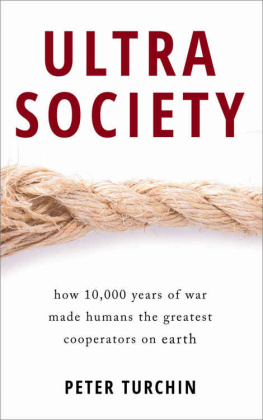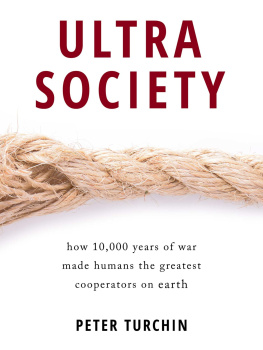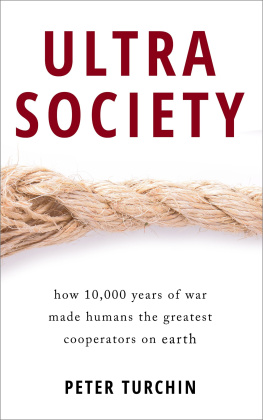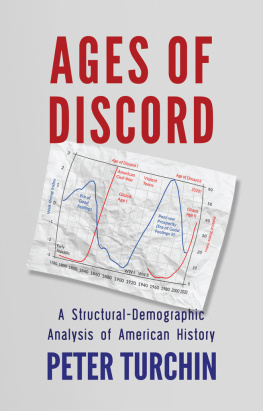Chapter 1
The Puzzle of Ultrasociality
From Gbekli Tepe to the International Space Station
There is a large grassy field near my house in Connecticut, and a summers evening with a clear sky found me hiking over to it. Reaching the middle, I turned to the northwest and waited. Ten minutes later, right on time, a bright dot rose above the horizon and started racing across the sky. With the help of high-powered binoculars I could just about make out the shape of one of humanitys most impressive achievementsthe International Space Station. Here was a flying machine that looked nothing like a flying machine; more like a cathedral in outer space. How astonishing that something so unwieldy could get up into the sky. The whole experience was over in two minutes, but the thrill I felt watching this product of a remarkable feat of human cooperation was worth a few mosquito bites on that humid New England night.
The ISS is the wonderful fruit of something that human beings learned to do only very recently. Of course, it involves hundreds of technologies that would have astonished even the greatest scientists of a century earlier. But the really strange thing it proves is that people can now work together on a very large scale indeed.
In the broadest sense, hundreds of millions contributed to it, including you and me. After all, a small fraction of the taxes we pay helps ensure that the ISS continues to grow and function. But how many people actually participated in building it? Though nobody knows for sure, we can do a rough calculation. Consider that the total cost of the station is around $150 billion. Dividing it by $50,000, the median pay of American workers, we can estimate that more than three million people-years were required to build and operate it. (This is actually an underestimate, because the median pay in Russia, for example, is much lower than in America.) A few, those who work for NASA or Roscosmos, devoted years of their lives to the project. Most, like welders in Russia who assembled the Soyuz module and the American engineers who built the solar array wings which power the ISS , contributed only weeks or months of work. The ISS builders must number many more millions than three.
Three million is something like the population of Armenia or Uruguay. But the builders of the station and the astronauts working in it did not come from a single country. The ISS is a joint project supported by 15 nations. It was constructed by people from all over the world, includingindeed, led bytwo nations that had recently been Cold War adversaries.
Since the beginning of human spaceflight 50 years ago, astronauts have reflected on how peaceful, beautiful, and fragile the Earth looks from space, wrote the ISS astronaut Ron Garan in his blog Fragile Oasis. We can look down and realize that we are all riding through the Universe together on this spaceship we call Earth, that we are all interconnected, that we are all in this together, that we are all family. Of course, this is an optimistic view; the reality down here on the ground is much grimmer. There are still wars that kill thousands of people, such as the one raging in Syria.
In factas Garan discovered while taking some practise shots to test his camerayou can see some borders from space. The one between India and Pakistan shows up as an illuminated line snaking across the landscape. It is lit up by the floodlights India uses to prevent infiltration by terrorists and arms smugglers. This is a sobering reminder that the conflict over Kashmir between these two nuclear-armed nations, which has caused four major wars and continues to claim dozens of lives every year, has not been resolved.
How do we stop wars and eliminate suffering and poverty? The answer is quite simplejust do something, proposes Garan in his blog. The challenges of the world are really about how each of us individually responds to them. In other words, to what extent does humanity, on a person-to-person basis, commit to making a positive difference, no matter how small, or how big?
Garans heart is in the right place. Unfortunately, what he proposes will not work. Difficult things like building peaceful, wealthy, just societies cannot be done by individuals, no matter how well intentioned they are. The only way we can eliminate violence and poverty is by working together. In a word, the answer is cooperation.
All this might just sound like a feel-good pep talk. In fact, it brings us face to face with something remarkable. We often wish that people could work together better, but actually human beings are astonishingly good at cooperation. We are better at it than any other creature on the planet. The ISS shows how far weve come. And herein lies a profound puzzle, because according to the standard evolutionary science, we shouldnt be able to cooperate very much at all. We shouldnt have the capacity in the first place, and we shouldnt have acquired it so fast. But we do and we did.
I am concerned not so much to promote noble intentions as to understand how humanity evolved this strange ability to work together in groups of millions (and more). Once we understand this immensely important side of human nature, perhaps then we will see a way to cooperate even better. But to get there, we will need the kind of lofty overview you just cant get from space.
This book is about ultrasocialitythe ability of human beings to cooperate in very large groups of strangers, groups ranging from towns and cities to whole nations, and beyond. The ISS is the brightest, most visually striking example of large-scale international cooperation. But there are other examples. They include CERN , the European Organization for Nuclear Research, which operates the Large Hadron Collider near Geneva. Then there is the United Nations. The greatest achievements of the UN include addressing hunger and increasing food security, aiding refugees, protecting children, promoting womens rights, and fighting epidemics such as HIV and AIDS . Peacekeeping operations by the UN sometimes fail, as happened in Srebrenica, Bosnia, in 1995. But ending a civil war is a tough job, and lets not forget the UN s successes in, for example, El Salvador and Guatemala.










